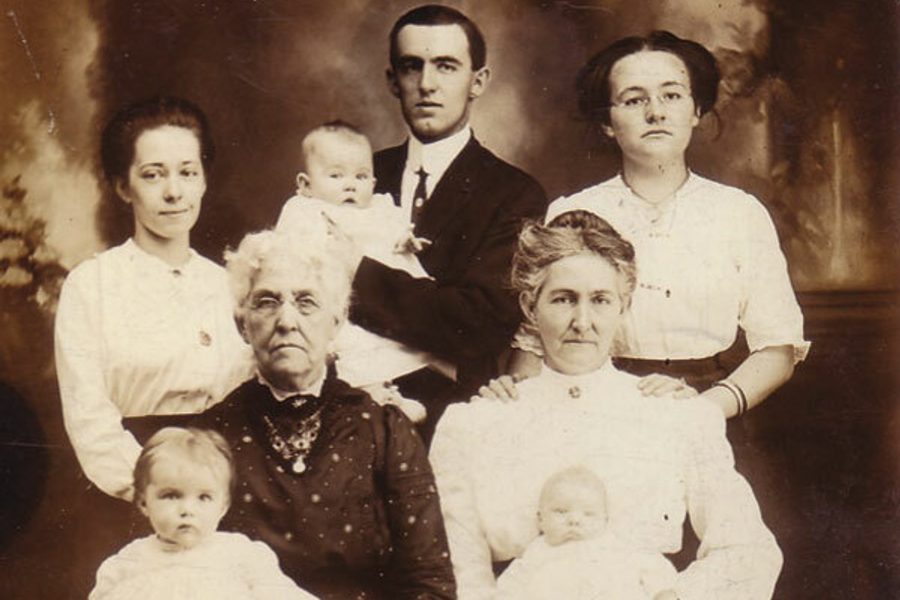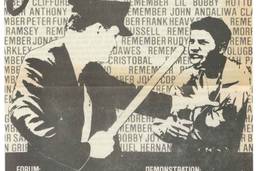Not All Happy Families Are Nuclear
A new book chronicles experiments in domesticity.
Mandy Van Deven

In Anna Karenina, Tolstoy wrote “all happy families are alike.” He was wrong.
In One Big Happy Family: 18 Writers Talk About Polyamory, Open Adoption, Mixed Marriage, Househusbandry, Single Motherhood, and Other Realities of Truly Modern Love (Riverhead, February), we meet 18 families that could not be more different from one another, each demonstrating that healthy families come in a variety of configurations.
Rebecca Walker, the book’s editor, describes in the introduction her process in choosing these extraordinary pieces, writing, “I was looking for stability, complexity, longevity and overall happiness. When I saw those four elements in a family, no matter what it looked like, I paid closer attention.”
Walker is no stranger to nontraditional families. Her own childhood was spent being passed back and forth every two years between her father’s home in New York and her famous mother’s – Alice Walker, author of The Color Purple–home in San Francisco. She has said the experience left her longing for the “stability” that was absent in her life.
In the introduction, Walker writes about her romantic relationships and how the birth of her son made her realize the responsibility she had in filling the void within herself, as well as in figuring out what she wanted her own family to look like: “Our only option is to think deeply about every step, move forward with discipline and an eye toward longevity and the greater good, and have faith that we have done the right thing. If 10 years pass and our family is thriving, we know we’ve made good decisions. If 10 years pass and it’s falling apart, well, we can credit our decisions for that, too.”
The challenge of any anthology is to represent the topic while maintaining the reader’s attention and not spreading itself too thinly by attempting to cover everything there is to say on the matter – a challenge often unmet in a collection of so many authors’ stories that vary in technique, tone, intention and perspective. The purposeful placement of each work and the personal narrative format create a continuity that allows the reader to move seamlessly from one story to the next, while the topical and stylistic variety maintains interest.
The anthology begins with what some may consider the book’s most radical piece, Jenny Block’s “And Then We Were Poly.” Instead of Block approaching her polyamorous lifestyle as one on the fringe, she normalizes her relationships with her husband and girlfriend by pointing out the many ways in which they mimic monogamous couplings, addressing the questions she has no doubt been asked numerous times: How did you decide to be polyamorous? Does your husband get jealous of your girlfriend? How do you explain your relationships to your daughter?
Block doesn’t get bogged down in the different types of poly arrangements, and she’s not proselytizing, either. She simply speaks her piece and lets the reader sort out the rest.
The need to give priority to open communication and honesty – with one’s self and others – is a recurring theme throughout the book. Such honesty can facilitate a broken heart, as is the case in asha bandele’s “Woman Up.” bandele tells the story of how she fell in love with, and married, a man in prison, later giving birth to their child. She writes with raw sincerity about the wounds she carries, knowing that her maternal joy is a constant reminder of her husband’s forced absence from both her and their daughter’s lives.
In “DJ’s Homeless Mommy” and “Sharing Madison,” Dan Savage and Dawn Friedman recount, respectively, their experiences as parents of adopted children. Both write about the challenges of maintaining a relationship with their child’s birth mother – in Savage’s case, a homeless-by-choice street kid, and in Friedman’s, a 19-year-old college student who did not want a child to derail her dreams. The authors also relay the mistakes they make in coming to terms with their role as the child’s parent.
For example, when Savage and his partner explain to their 3-year-old son that the reason his birth mother smells badly is because she doesn’t have a home in which to bathe or wash her clothes, they quickly learn the meaning of “age appropriate information,” as the child reacts with panic for his birth mother’s safety.
In “Home Alone Together,” Neal Pollock writes a hilarious piece on the domestic division of labor between him and his wife – from who washes the dishes to who cooks dinner to who takes care of “the kid.”
Pollock’s humorous explanation of his family’s hodgepodge arrangement stands in stark contrast with Marc and Amy Vachon’s methodically 50-50 split in duties in “Half the Work, All the Fun.” (Yes, they even co-wrote the essay!)
Other noteworthy stories are written by Liza Monroy, Susan McKinney de Ortega and Amy Anderson. Monroy married her gay best friend in Las Vegas to prevent him from being deported to a country where “gay sex was considered criminal behavior,” she writes. For years, she hid information about the marriage from her mother, a foreign diplomat. McKinney de Ortega’s story involves her rejection of middle-class American values in favor of a life in Mexico with a man 15 years her junior. And Anderson’s story tells of her attempt to move from a multicultural family of 12, in which she grew up, to an all-white family of four.
Race is addressed openly in several pieces, most profoundly in ZZ Packer’s anger-inducing essay on mothering a mixed-race son who resembles the child’s other parent. I cringed while reading the ignorant comments of white moms, many of whom assumed that Packer was her son’s nanny, and I sympathized with her disappointment in black people’s praise of his “good hair” and light skin.
The political and social analyses in this book are largely spot-on. The authors don’t shy away from difficult subjects. They simply lay bare their perspectives – which do not always align – to make clear the myriad ways our society’s popular familial construction has been refigured over time.
With the recent passage of California’s Proposition 8 – which banned marriage equality in the state – and the ban against same-sex adoption in several Southern states, there is no better time to discuss how the definition of “family” no longer mimics a nuclear model. One needs dig no deeper than the celebrity gossip pages to see how long-term unmarried couples, transnational adoption and divorce are expanding our definitions of love and family.
Walker’s anthology provides a modern look at the relationships Tolstoy depicted in his famous 1877 novel, relationships that were dynamic even then, and that will continue to gain legitimacy through our own lived experimentation with unscripted domesticity.





